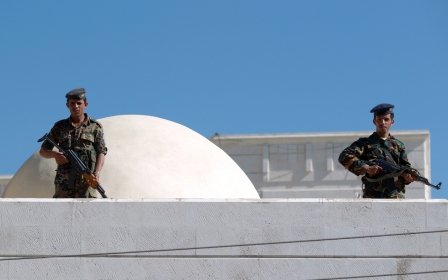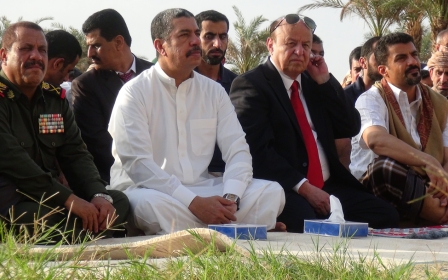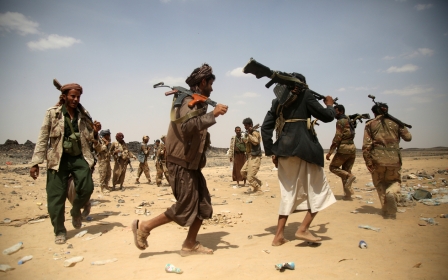Yemen’s unity: Does it still matter?

This 22 May marked the 26th anniversary of the unification of North Yemen and South Yemen. If there is anything that still unites the two parts today is that they both share the same experience of devastation and misery.
The anniversary represented another opportunity to mirror Yemen’s growing divisions. In Sanaa, despite several air strikes shaking the city, thousands demonstrated as the Saudi-led coalition jet fighters hovered over their heads. In Aden, where assassinations and suicide attacks are the new norm, not only there was no demonstration to mark the day - “since that would be an insult to all southerners," as one southerner put it - the city announced that the unity day is no longer a national holiday. To mark the day, both President Hadi and former president Saleh did not miss the chance to issue speeches, confusing us with who exactly rules the country.
In war-ravaged Yemen, questioning the country’s unity remains of significance. Yemen’s domestic realities have grown tense over recent years, exacerbated by a war that has intensified political, tribal, sectarian and ethnic divisions. The war, the lack of a united, powerful political legitimacy, the longstanding Southern Movement (Hirak) demand for independence, and the lack of a common national identity, are among some of the challenges that greatly undermine the country’s unity.
Unity under war
For many, federalism is the key to avoiding Yemen’s partition and the start of a new social contract. This has been one of the outcomes of Yemen’s National Dialogue (NDC). After a great dispute between pro-federalism participants who believed that federalism would facilitate the introduction of state-building on the basis of unity, and the anti-federalist side who believed it would introduce a new partition, the NDC agreed that Yemen would be a federal state divided into six regions. But with the introduction of federalism, the key dissident voice against it was the Houthis, justified by their sectarian outlook and belief that they had been given a raw economic deal in the new regional settlement.
In this sense, the Houthis embarked on a war against unity when they stormed President Hadi’s palace in September 2014. Through their coup d'état they were protesting against a new form of Yemen’s unity, or what President Hadi likes to call “the new Yemen”. It is important to say here that the Houthis’ action doesn’t make the Saudi intervention less problematic.
In the ongoing conflict, Yemen’s Soutern Movement, or Hirak, in Aden is no longer under the control of old hands, such as Ali Salem al-Beidh or others. It’s a coalition of separatist militia, jihadis and Salafists, orchestrating their secession from Yemen’s north. Just last month, more than 800 Northerners living in Aden's port were arrested and expelled – which is a clear sign of Yemen’s growing ethnic division. With the expansion of the Popular Resistance, Taiz is today calling for independence as well. While the Saudis say they are fighting to restore Yemen’s legitimacy, what kind of progress can there be if we restore legitimacy to an extremely divided country?
Hirak, a cause with wrong political solution
On the civil and political level, the longstanding Yemen’s secessionist movement (Hirak) continues to raise the demand for an independent south to achieve a just solution to its grievances. However, while the Hirak movement may have a just cause it offers the wrong political solution.
The Hirak’s main problem with unity has always been the increasing grievances they have endured, since the unification process ignored the regional disparity in population and resources. The call for independence has been an expression of protest, which is legitimate, but the answer is absolutely not secession. The answer is rather finding and ensuring just solutions to those grievances – which all Yemenis across the country also suffer from. These grievances do not stem from northern hegemony, but rather from the lack of equal citizenship rights enjoyed by all citizens across Yemen.
One national identity
The future for Yemen’s unity looks grim. Fragmentation and bitterness have increased epidemically over recent years, not only in the southern governorates, but throughout the country. Yemen’s politicians have failed to advance Yemen’s unity year after year. Mending rifts among the divided nation in Yemen can only be done by enhancing a sense of common national identity.
Otherwise, Yemen is certainly on the road to becoming two Yemens, if not more. Any political process (including the frequently interrupted Yemen peace talks) shaping Yemen’s political future must take Yemen’s unity very seriously; ensuring equal citizenship rights for all Yemenis. The current crucial priority, though, is to end the war.
- Afrah Nasser is a Yemeni freelance writer and blogger focusing on human rights violations, based in Sweden since May 2011. She's the co-founder of the Yemeni Salon in Sweden. She blogs at: afrahnasser.blogspost.com.
The views expressed in this article belong to the author and do not necessarily reflect the editorial policy of Middle East Eye.
Photo: A supporter of the southern separatist movement waves the movement's flag during a rally calling for independence of the south in Yemen's second city of Aden on 18 April, 2016 (AFP).
New MEE newsletter: Jerusalem Dispatch
Sign up to get the latest insights and analysis on Israel-Palestine, alongside Turkey Unpacked and other MEE newsletters
Middle East Eye delivers independent and unrivalled coverage and analysis of the Middle East, North Africa and beyond. To learn more about republishing this content and the associated fees, please fill out this form. More about MEE can be found here.





